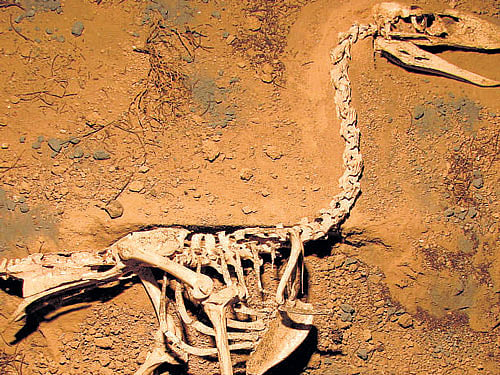
How long ago cattle-raising people from Central Africa managed to reach Southern Africa has always been a mystery to scientists because it was assumed that the herders were stopped by sleeping sickness, which is carried by tsetse flies and kills cattle, goats, sheep and people.
The tsetse fly’s natural range stretches across Africa and through all the woodland and rain forest areas below the Sahara to roughly as far south as the Zambia-
Zimbabwe border. But a recent study, published in Proceedings of the National Academy of Sciences by chemists and anthropologists from several American universities, raises the possibility that more than 2,000 years ago, there were fly-free corridors leading south from East Africa that small groups of herders might have been able to use.
Once through, they could have spread out across southern regions free of
sleeping sickness (also called African trypanosomiasis). They would have had little competition for grazing, because that part of Africa was populated by hunter-gatherers like the San people, who were formerly called Bushmen.
Analysis of isotopes in animal teeth in the ashes of cooking fires in an ancient settlement in Kenya near Lake Victoria indicated that the animals ate grass almost exclusively.
Because tsetse flies inhabit bushes and trees, the area must have somehow been denuded of them, at least temporarily – perhaps by heavy grazing or fire, said Fiona Marshall, an anthropologist at Washington University in St. Louis and one of the authors of the study.
Early migration by herders would explain how a genetic mutation that
originated in East Africa and helps people digest cow’s milk could have become as widespread as it is in southern Africans, Marshall said.
Donald G Mcneil Jr
Anatomy of a terror bird
After dinosaurs became extinct, the terror birds arrived. The fierce-looking creatures had sharp, hooked beaks and long hind legs, and could reach 10 feet in height. A new study describes the exquisitely preserved fossil of a South American terror bird and
provides new details about its anatomy. Ninety per cent of the fossil is well preserved.
“This is the most complete skeleton found of any terror bird,” said Federico Javier Degrange, a paleontologist at the National University of Cordoba in Argentina and one of the study’s authors. With the fossil, found in Argentina, Degrange and his colleagues were able to reconstruct the bird’s skull, voice box, trachea, eye bones and palate.
Described in The Journal of Vertebrate Paleontology, the new species, called Llallawavis scagliai, was about 4 feet tall. The bird’s inner ear structure suggests it was capable of hearing low-frequency sounds, just as running birds like ostriches and emus do.
“They may have used low sounds to communicate with other individuals or for prey detection,” Federico said. “They may have been listening for small mammals like rodents.” The fossil adds to the diversity of terror birds and raises new questions as to why they went extinct. Since the species varied in size and weight, terror birds may not have died out because of an inability to compete with placental mammals, as some researchers have suggested, Federico said.
Juvenile sea turtles are no slackers
Sea turtles 6 to 18 months old are active swimmers that work hard to find favourable ocean habitats, according to a new study in Current Biology. Scientists know little about the so-called lost years that young turtles spend at sea before returning to coastal areas to forage and reproduce. Juvenile sea turtles were thought to passively drift with ocean currents. Researchers discovered otherwise after using satellite telemetry to track 44 young turtles in the Gulf of Mexico.
Sindya N Bhanoo